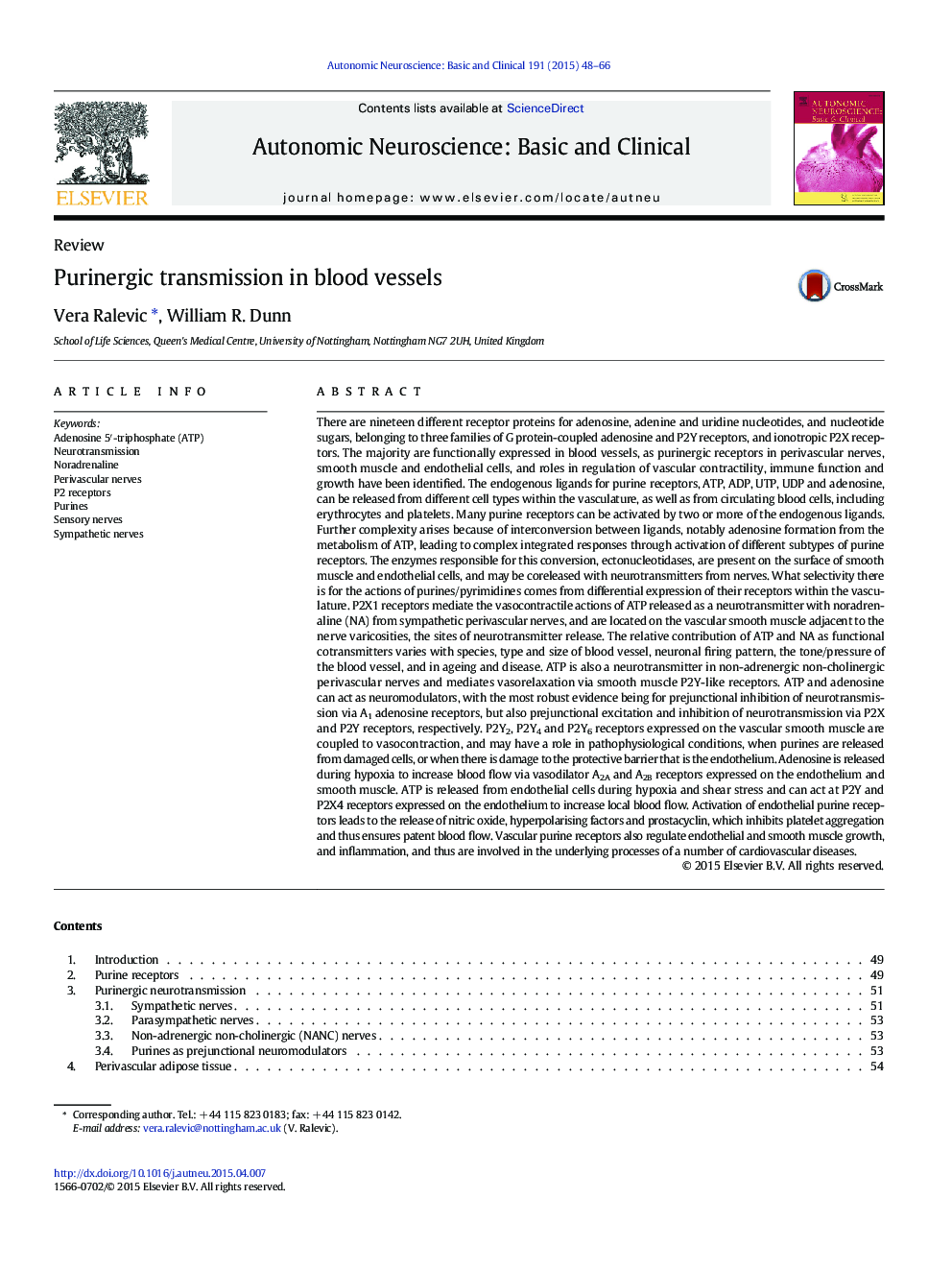| کد مقاله | کد نشریه | سال انتشار | مقاله انگلیسی | نسخه تمام متن |
|---|---|---|---|---|
| 3034585 | 1579524 | 2015 | 19 صفحه PDF | دانلود رایگان |

There are nineteen different receptor proteins for adenosine, adenine and uridine nucleotides, and nucleotide sugars, belonging to three families of G protein-coupled adenosine and P2Y receptors, and ionotropic P2X receptors. The majority are functionally expressed in blood vessels, as purinergic receptors in perivascular nerves, smooth muscle and endothelial cells, and roles in regulation of vascular contractility, immune function and growth have been identified. The endogenous ligands for purine receptors, ATP, ADP, UTP, UDP and adenosine, can be released from different cell types within the vasculature, as well as from circulating blood cells, including erythrocytes and platelets. Many purine receptors can be activated by two or more of the endogenous ligands. Further complexity arises because of interconversion between ligands, notably adenosine formation from the metabolism of ATP, leading to complex integrated responses through activation of different subtypes of purine receptors. The enzymes responsible for this conversion, ectonucleotidases, are present on the surface of smooth muscle and endothelial cells, and may be coreleased with neurotransmitters from nerves. What selectivity there is for the actions of purines/pyrimidines comes from differential expression of their receptors within the vasculature. P2X1 receptors mediate the vasocontractile actions of ATP released as a neurotransmitter with noradrenaline (NA) from sympathetic perivascular nerves, and are located on the vascular smooth muscle adjacent to the nerve varicosities, the sites of neurotransmitter release. The relative contribution of ATP and NA as functional cotransmitters varies with species, type and size of blood vessel, neuronal firing pattern, the tone/pressure of the blood vessel, and in ageing and disease. ATP is also a neurotransmitter in non-adrenergic non-cholinergic perivascular nerves and mediates vasorelaxation via smooth muscle P2Y-like receptors. ATP and adenosine can act as neuromodulators, with the most robust evidence being for prejunctional inhibition of neurotransmission via A1 adenosine receptors, but also prejunctional excitation and inhibition of neurotransmission via P2X and P2Y receptors, respectively. P2Y2, P2Y4 and P2Y6 receptors expressed on the vascular smooth muscle are coupled to vasocontraction, and may have a role in pathophysiological conditions, when purines are released from damaged cells, or when there is damage to the protective barrier that is the endothelium. Adenosine is released during hypoxia to increase blood flow via vasodilator A2A and A2B receptors expressed on the endothelium and smooth muscle. ATP is released from endothelial cells during hypoxia and shear stress and can act at P2Y and P2X4 receptors expressed on the endothelium to increase local blood flow. Activation of endothelial purine receptors leads to the release of nitric oxide, hyperpolarising factors and prostacyclin, which inhibits platelet aggregation and thus ensures patent blood flow. Vascular purine receptors also regulate endothelial and smooth muscle growth, and inflammation, and thus are involved in the underlying processes of a number of cardiovascular diseases.
Journal: Autonomic Neuroscience - Volume 191, September 2015, Pages 48–66